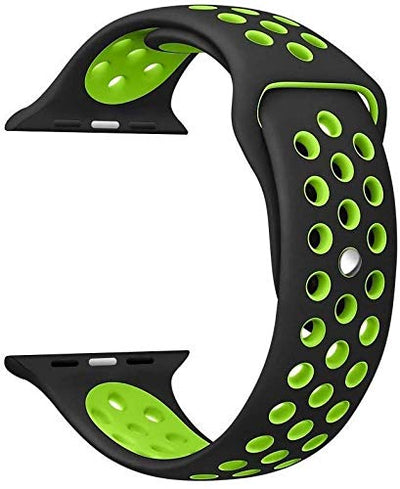Everything you need to know about Chargers
Everything you need to know about chargers
THE BASICS
What is a Charger?
All portable devices such as smartphones, tablets, laptops, wireless headphones, wearables, cameras and many more have an internal rechargeable battery that powers it. Batteries use electrolytes to generate electricity. But batteries are exhausted they need to be recharged again. A charger is an external electrical source that rejuvenates the electrolyte with ions so that it can generate electricity all over again. A charger is nothing but a simple electrical circuit that steps down the conventional household electricity (220V AC) to a smaller (5-20V DC) voltage that matches the battery’s operational requirement.
What are the different types of chargers?
- Wall Charger / Travel Charger: A power adapter that converts a household 110V/220V AC voltage into 5V DC to 20V DC for charging a connected gadget.

- Car Charger: A tiny circuit that converts the car’s 12V DC battery voltage to 5V to 20V DC for charging a gadget.

- Power Bank: A portable battery-operated charging device that supplies 5V to 20V DC for charging a connected gadget.

- Wireless Charger: A new type of charger that transfers power over the air without contact, but in close proximity. It requires an input connected power source (Adapter or Power Bank) and the charging device needs to be compatible and placed over a special built-in coil.

Uses of different types of chargers
Each charger is meant to serve a purpose. The conventional Wall Charger or Travel Chargers are similar to power adapters and use the household electricity to charge your devices such as smartphones, tablets, laptops and others. When you are out driving or travelling by car, you can charge your smartphone and other gadgets using Car Chargers which runs off the car’s battery using the cigarette lighter socket. When you need the convenience of charging without using any connecting wires to your device, you can use a Wireless Charger. All you need to do is place your compatible smartphone on a wireless charging pad and it will start charging. Lastly, when you need to charge your devices when none of the above is available, a Power Bank can be used. A power bank is a compact and a portable rechargeable battery pack designed to help charge your devices anywhere, anytime.
Which are the types of charging ports?
Most gadgets we use today have one of the three most common types of ports – Micro USB, USB Type-C and Lightning. Micro USB is now being phased out and is currently being replaced by USB Type-C ports. A Lightning port is a proprietary connector that is found only on Apple products such as iPhones and iPads.
THE SPECIFICS
What is “rating” in chargers?
When we speak about data storage, its capacity is measured in KB, MB, GB or TB. Similarly, when we speak about a charger, it’s measured in ratings such as current (A or Amps) or power (W or Watts). A higher current handling converts into a higher wattage output by the charger. So to help charge your device faster, you need a higher current or power input.
Standard Charging Vs Fast Charging – what’s the difference?
Let’s rewind a few years – if you held a conventional charger in your hand back then, you may remember reading something such as “Output: 5V DC, 500mA.” This means the charger delivers a maximum of 5V DC with 500mA current and the total power rating of the charger is 2.5 Watts – the formula is V(voltage) x A(current) = W(power).
Now assume if a battery is being charged using the 2.5W charger, it charges completely in 8 hours. So to charge the same battery faster, we need to increase the current input by a substantial amount. Now if you use a 20W charger, the same battery could charge faster and top up within 2 hours. However, the speed of charging depends on the battery, its capacity and its compatibility with the charger. Most smartphones today can do a fast charge, but the manufacturer does not include fast chargers in the box. For example, an iPhone usually ships with a 5W charger in the box, but the iPhone is capable of fast charging with 15W – 25W chargers.
But you should know this – if your smartphone company says the phone can charge from 0-80% in 30 minutes, it does not mean it will charge 100% in 38 minutes. It will take a lot more time for that remaining 20% to fill up and not the “math-calculated 37.5 minutes”.
What’s this “XYZ-watt charger” everyone speaks about?
Well, previously when smartphones had larger batteries and basic performance, there wasn’t much strain on power requirements. Now that the demand of high performance and longer stamina is required from smartphones, all eyes are on the battery – how much longer can they last and how fast can they recharge. In order to make batteries last longer, they will have to be made bigger and larger. While smartphones and laptops today cannot accommodate larger batteries because of the requirement for these equipments are to be slimmer and lighter, the only way ahead is to concentrate on the charging speed.
In order to charge the battery faster, we need to pump in higher a voltage and current into the battery. This converts to higher wattage (or power) that is required to charge the said battery faster than normal. A higher wattage will make the battery charge at a significantly faster rate so that you don’t spend hours waiting for the battery to reach 100%.
But…but…but….hold on! Every battery and its charging circuit have limitations that cannot be ignored. It all depends on the manufacturers of the device and the battery which limits the charging input wattage and in turn, the duration of the charging. So if your smartphone manufacturer confirms that the phone can charge at maximum 25 Watts, you can use a 25W charger (or higher) without any second thoughts to get the optimum charging speeds for your phone.
To know the maximum-powered charger that your smartphone can support, head to your smartphone’s user manual or to the manufacturer’s website for more details.
THE TYPES
What are the types of Fast Chargers?
Fast charging chargers usually come with two types of USB ports – USB Type-A and USB Type-C with Power Delivery (PD). However, first let’s look into what are the voltage requirements for faster charging, and USB Ports. When we speak of faster charging and fast charge technologies, the voltage and current output varies, depending on the connected device’s requirement. It all depends on the device manufacturer to define the charging requirements and its compatibility with various chargers.
As for now, fast chargers can output up to four different types of voltages with varied current/power options. The four different types of voltages are 5V, 9V, 15V and 20V. While 5V and 9V can be supplied via USB Type-A ports, 15V and 20V can only be supplied via USB Type-C using Power Delivery. Using Power Delivery can charge device requirements of up to 20V with a maximum of 5A or 100W – mostly used for laptops. Newer upcoming smartphones are also said to handle charging with up to 100W chargers promising a 100% battery top-up in less than 30 or 40 minutes.
Now assuming that you have a brand new flagship Android phone – it definitely will have a USB Type-C port and is capable of doing a fast charge. So you plug it into a PD fast charger to charge. The phone and the charger will talk to each other about themselves and the phone will then demand the voltage and current it requires for the best and fastest possible charging. But it also depends on the charger if it can deliver the requirements. Hence, using a higher current/power rated charger is advisable for a speedy charge.
THE VARIANTS
Different variants of Fast Chargers
As newer power-hungry devices such as smartphones and laptops use larger capacity batteries to power the device for longer periods, the demand for faster charging of these batteries is constantly rising. Smartphone companies are actively developing this area so batteries can be charged faster than before, so you can start using the device faster. Some of the most popular and competitive fast charging technologies are ‘Quick Charging’ (by Qualcomm), ‘VOOC’ and ‘SuperVOOC’ (by OPPO), ‘SuperCharge’ (by Huawei) and ‘Warp’ and ‘Dash Charge’ (by OnePlus).
But each technology is continuously advancing too. For example, Quick Charge is currently on version 4.0. QC 1.0 could handle 5V at a max of 3A or 10W. When QC 2.0 came along, it could handle 5/9/12V at max 3A or 10W. QC 3.0 could do up to 20V with max 18W and now QC 4.0 can handle up to 27W via PD. Similarly, Samsung’s Adaptive Fast charging can handle 5V/9V @15W, OnePlus’ Warp can handle a maximum of 5V @30W, Huawei’s SuperCharge can do 5V/9V/10V @25W and OPPO’s SuperVOOC can do 5V @50W. Since most smartphones can handle only 5V and 9V, these chargers cannot be used to power laptops as they require 20V. Laptops need a PD-based charger which can deliver the required voltage and power.
FINAL WORDS
Which charger will work for my device?
It’s always advised to use the original charger that comes in the box. However, to cut prices, manufacturers are either bundling lower-rated chargers or not including them at all. Samsung and Apple are the first smartphone manufacturers who have eliminated chargers from the box, forcing you to buy a faster charger from them or use a third-party charger.
Hence, choosing the right (compatible) charger for your smartphone is essential. Look up the device’s specification list on the manufacturer website or in the user manual and find out the maximum rating for a charger that is supported. Go that extra mile and spend for an original or compatible charger from the same brand or a renowned brand. Stuffcool is a renowned brand when it comes to chargers. Stuffcool has certified chargers which are highly compatible and are extremely safe for all of your devices.







Leave a comment